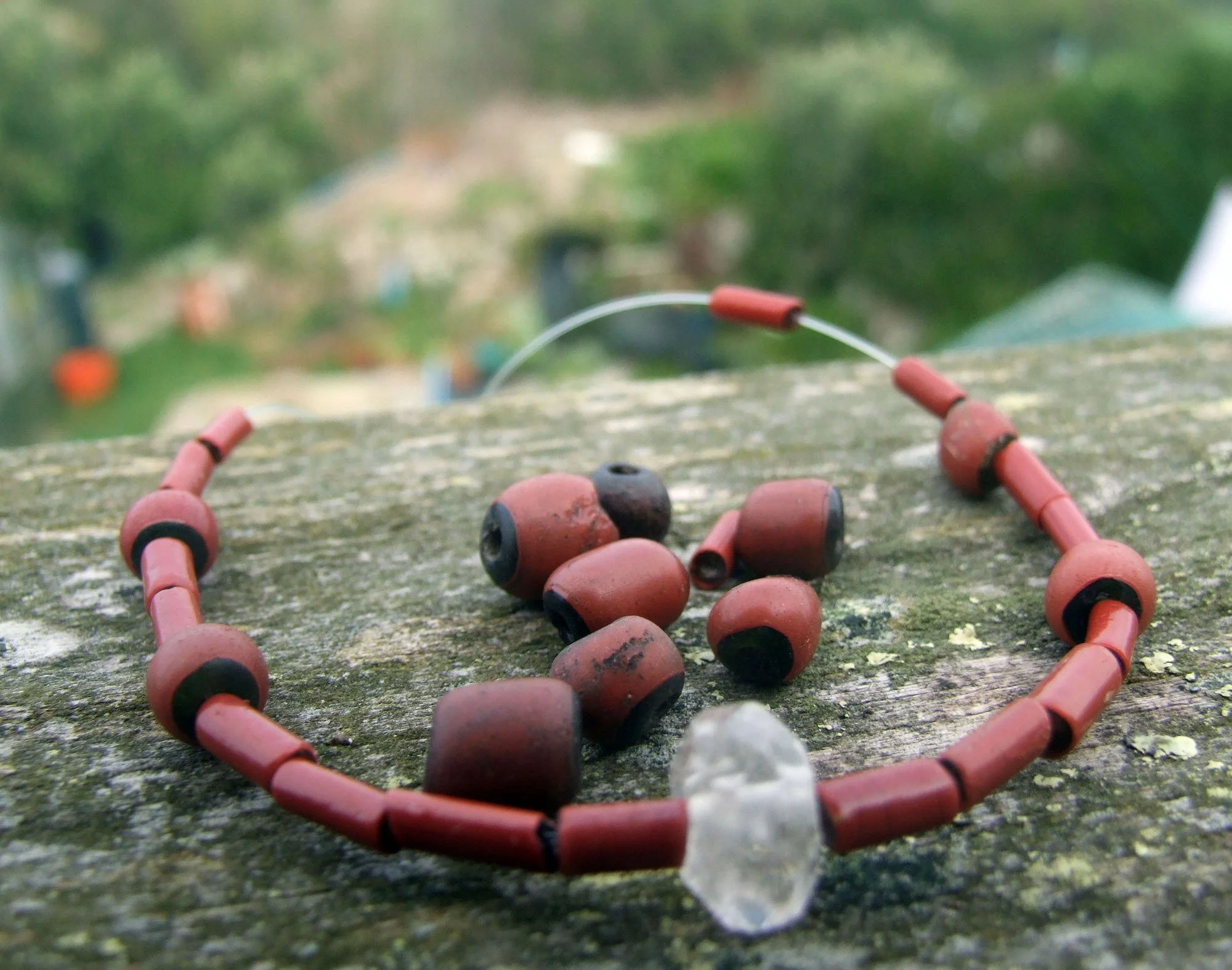Beady Pool: The Sinister History of Scilly's Hidden Treasure 🌊💎
The Arrival of Slavery in North America and Its Strange West Country Echo
It was 400 years ago that the first African slaves arrived in what was then colonial North America. This grim anniversary resonates in an unexpected and uncomfortable way in one of the most remote bays in all of the West Country: Beady Pool, on the southern shores of St Agnes in the Isles of Scilly. In all my UK travels, this beach - remote in the extreme - is one of the most haunting places I have ever visited.
Visitors searching for beads at Beady Pool
The Beads of Beady Pool and Their Dark History
The beads that gave Beady Pool its name were on their way to be used as bartering collateral in the Slave Trade when a Dutch ship went down just off Wingletang Downs. These tiny, colourful beads were meant to be exchanged for human lives. The first Africans to be taken to British North America arrived in Virginia in 1619, transported by a Dutch ship that had captured them from the Spanish. Before that, over half-a-million African captives had already been enslaved in Brazil.
St Agnes beads
Slavery, Bristol, and the Debate Over Recompense 🏛️
Today, the legacy of the Slave Trade is visible throughout the UK. In Bristol, for example, debates over place names like Whiteladies Road and Blackboy Hill highlight the city’s historical connection to the trade—a port that profited significantly from human suffering. Recently, Bristol has removed some place names linked to notorious traders like Edward Colston, whose name had adorned public spaces for centuries.
St Agnes bead hunter - extremely difficult to find
Elsewhere, the conversation continues: Should there be belated apologies? Should there be recompense?
A Remote Bay With a Powerful Message
But, as I say, no place in Southern Britain echoes the tragic history of the Slave Trade quite like Beady Pool. The beads found here are more than mere trinkets—they are potent symbols of a brutal chapter in human history.
Slave beads at Isles of Scilly Museum
These diminutive baubles never fulfilled their heinous purpose. They went to the bottom of the sea before they could be used to barter for human lives. Today, visitors search for these beads, hoping to find a tiny memento from this tragic era. After a good south-easterly storm, the beads are sometimes washed ashore, offering a poignant reminder of the past.
The Sinister Theory of the Bead Trade 🤔
The curator of the Isles of Scilly Museum once told me a disturbing theory about the bead trade. Some believe that slave traders were even more deceitful than originally thought. The museum holds beads of various types, some far more attractive than others, leading to speculation that barrels of cheap beads may have been topped with a shallow layer of valuable ones to deceive other traders.
Historians face challenges identifying which ship carried these beads or their precise destination. Staff at the Isles of Scilly Museum have pored over the Shipwreck Index of the British Isles, finding only two possible wrecks near Wingletang—both unnamed and from the 18th century. Most of the beads are brown earthenware of 17th-century Rhineland provenance, and some were sent to the Rijksmuseum in Amsterdam for identification.
The Hunt for Beady Pool's Treasures 🏝️
Finding a local on St Agnes who will show you a necklace made of these "slave" beads isn’t easy—most examples are kept at the museum. However, John Peacock, the island’s boatman, recalls collecting them as a child. "They’re harder to find now," he once told me. "You really need a good south-easterly storm."
Islander John Peacock with a handful of beads
Visitors to the island still search for beads on their hands and knees, scanning the gravel-strewn beach for the tell-tale glint of history. One visitor from Tresco, after 11 years of trying, finally found a bead—a tiny token of a terrible trade.
A Sombre Reminder
These beads may be small, but they carry the weight of an immense historical tragedy. They serve as a reminder of the world’s most heinous trade - a chapter in history that should never be forgotten.
Fact File 📜
You can see Beady Pool beads at the Isles of Scilly Museum, St Mary’s.
Bead-hunting at Beady Pool












